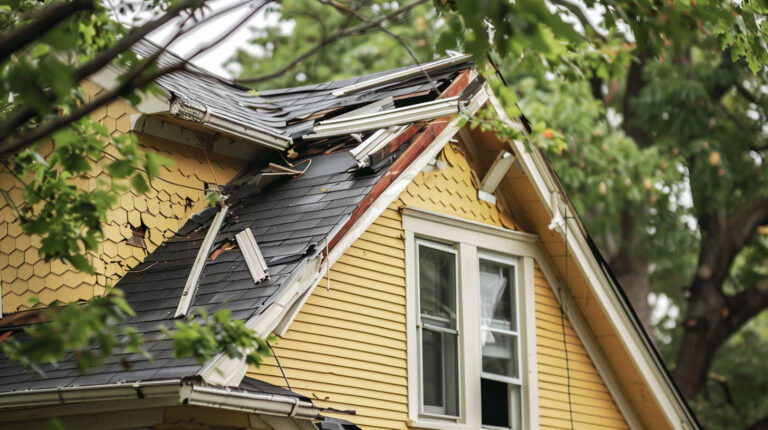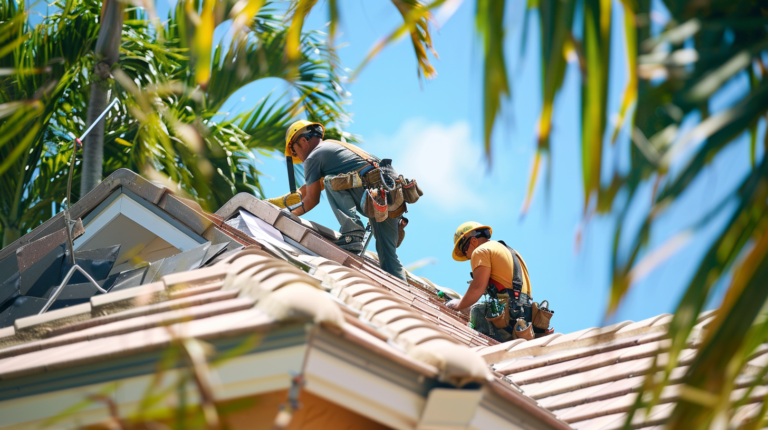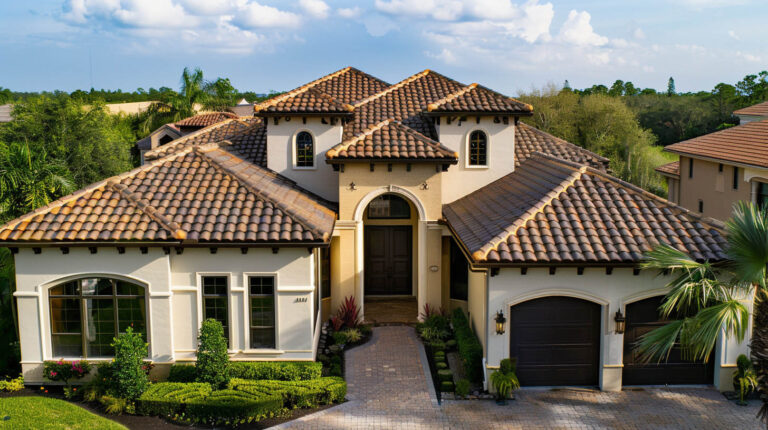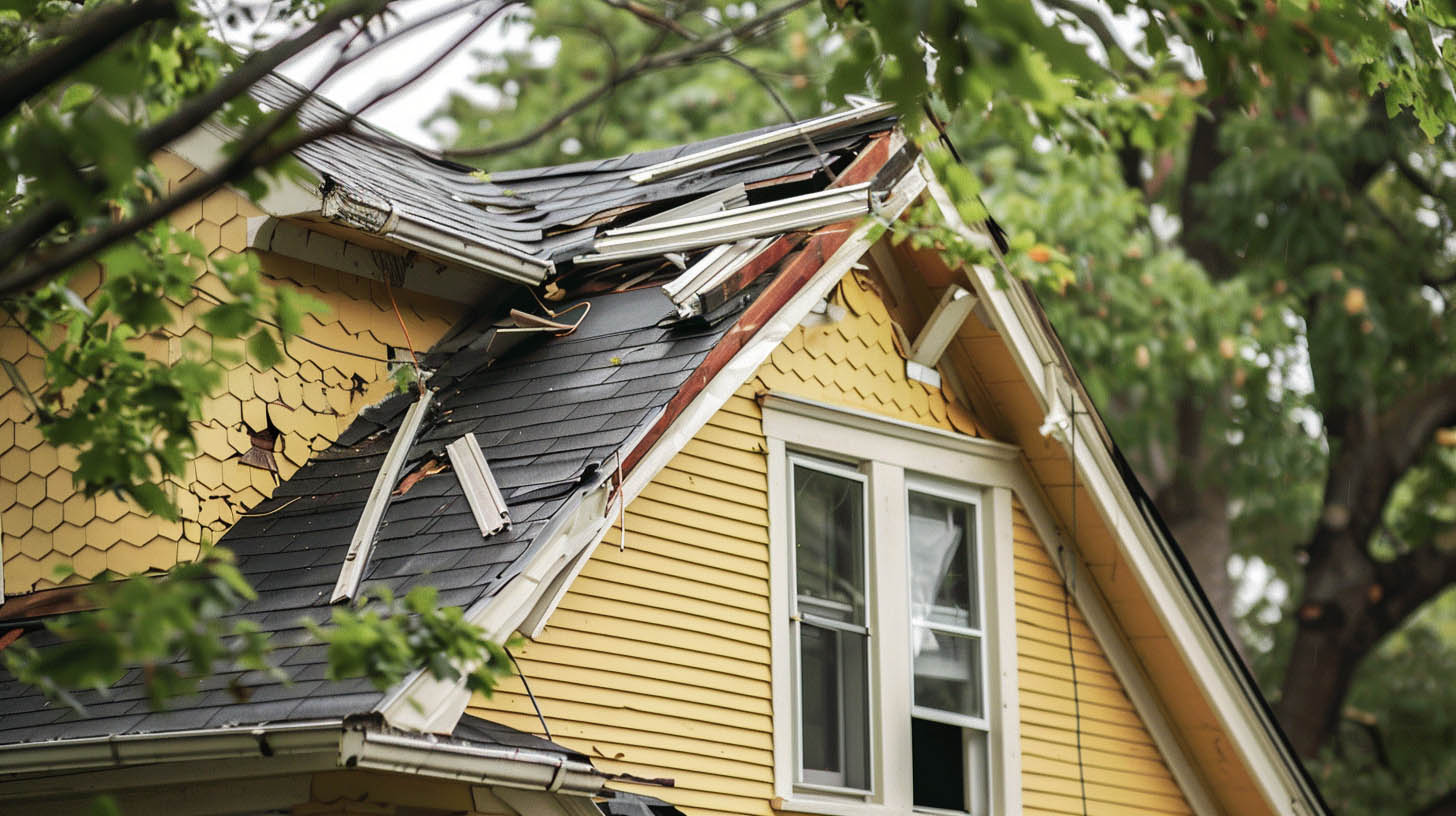
Blog
Top 5 Signs Your Roof Needs Immediate Repair After a Storm
After severe weather passes through Jacksonville, your home’s first line of defense—the roof—may have taken a serious hit. Even if the damage isn’t immediately obvious, hidden issues can lead to costly problems down the road. Recognizing the warning signs of roof storm damage is crucial for protecting your property and family. At Avenue Roofing, we specialize in identifying these issues and providing expert solutions. This guide will walk you through the top five signs that your roof needs immediate attention, helping you know exactly when to call in the professionals at Avenue Roofing.
Understanding Storm Damage in Jacksonville, FL
Living in Jacksonville, FL, means enjoying beautiful weather, but it also means preparing for severe weather events that can wreak havoc on your property. Your roof is particularly vulnerable to the high winds, heavy rain, and occasional hail that our coastal climate brings.
Understanding the specific type of damage these storms cause is the first step in protecting your home. From subtle issues to major structural problems, knowing what to look for after a storm can save you from expensive repairs. Let’s explore the unique risks your roof faces and the common types of storm damage here in Jacksonville.
Contact UsWhy Local Roofs Face Unique Storm Risks
Given Jacksonville’s geographical and climatic conditions, roofs in this area are particularly vulnerable to severe weather patterns. The combination of high winds, heavy rainfall, and occasional hurricanes creates a perfect storm for potential roof damage. Asphalt shingle roofs, prevalent in the region, often face increased risks from flying debris and hail, which can compromise their structural integrity. Additionally, the local flora, such as large trees, contributes to risks through falling limbs, emphasizing the need for regular inspections and proactive maintenance to mitigate damage.
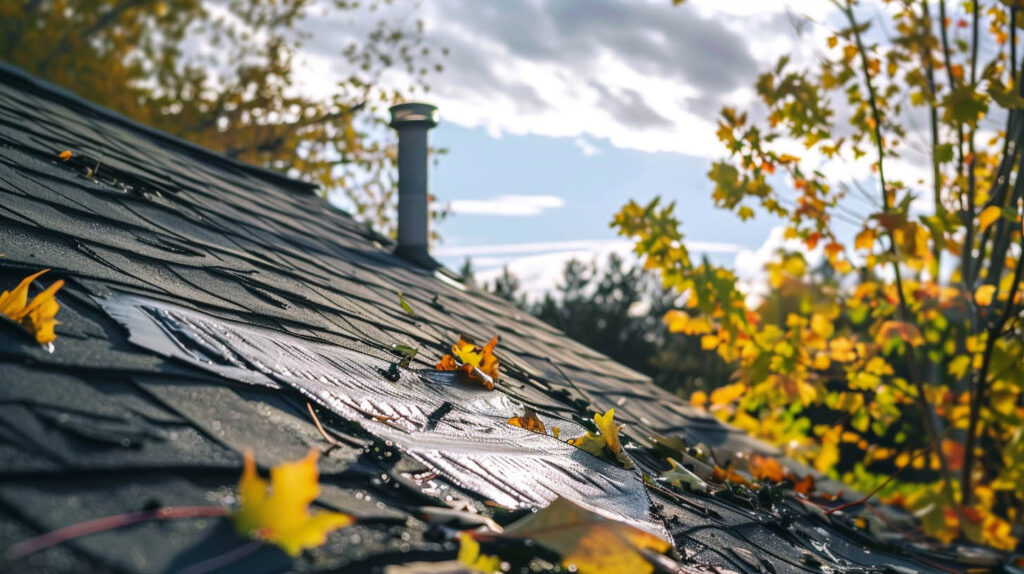
Common Types of Storms Impacting Jacksonville Homes
Jacksonville homes frequently encounter a variety of storm types that pose risks to roofing systems. Hurricanes, characterized by strong winds and heavy rain, can lead to significant damage, including missing shingles and compromised roof decking. Additionally, severe thunderstorms and occasional hail can cause roof damage, resulting in granule loss and potential leaks. Regular inspections after any storm can help identify early signs of damage, allowing homeowners to address issues promptly and prevent costly repairs down the line.
When to Inspect Your Roof After Severe Weather
After a storm rolls through, you might wonder how soon you should check for roof damage. The answer is as soon as it is safely possible. Delaying an inspection can allow minor issues to escalate into major problems, turning a simple repair into a costly replacement.
Promptly identifying warning signs is key to minimizing further damage to your home. Regular inspections are always a good practice, but a post-storm check is non-negotiable for any homeowner in Jacksonville. We’ll now discuss the ideal timeframes for these checks and the safety precautions you must take.
Key Timeframes for Post-Storm Roof Checks
Post-storm evaluations of roofs should occur promptly, ideally within 24 to 48 hours after severe weather. This critical timeframe allows homeowners to identify early signs of storm damage before minor issues escalate into costly repairs. Professional roofing contractors recommend scheduling a thorough inspection during this period to assess potential roof damage, such as missing shingles and water intrusion. Regular inspections not only enhance the life of your roof but also provide peace of mind knowing your home’s first line of defense is intact.
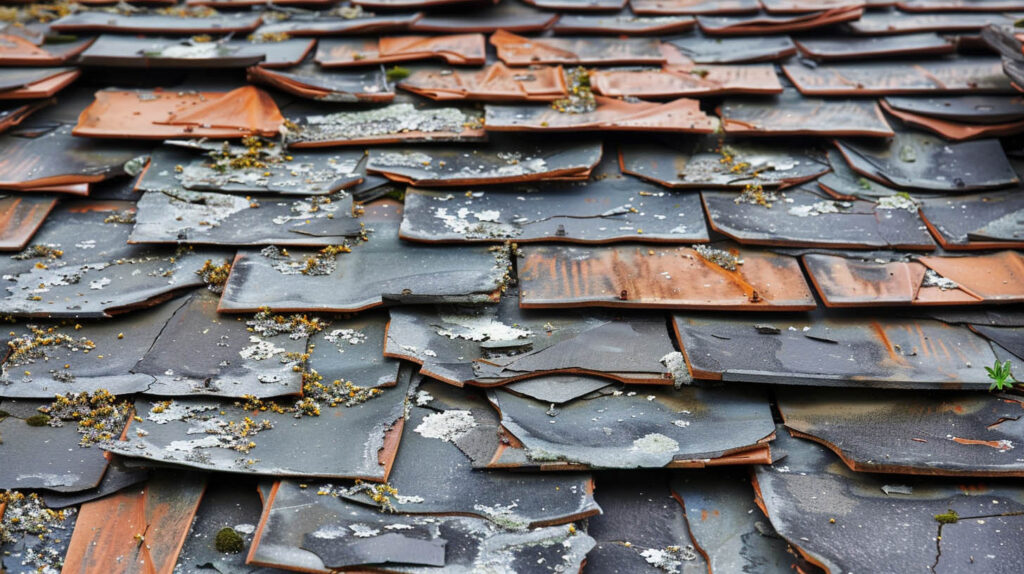
Safety Precautions Before You Assess the Damage
Prioritizing safety is crucial before examining any potential roof damage. Ensure the stability of your home’s structure; a sagging roofline may indicate serious underlying issues. Always wear appropriate protective gear, such as gloves and sturdy shoes, to guard against sharp debris. Using a sturdy ladder is essential, and never attempt to climb if winds are strong or the ground is unstable. In cases of significant damage, contacting a professional roofing contractor is wise, as they can safely assess and strategize necessary repairs.
Visible Shingle Damage and Loss
One of the most obvious signs of roof damage after a storm is visible trouble with your shingles. Your asphalt shingles are the primary barrier against the elements, and any compromise to them can leave your home vulnerable. Look for missing shingles, cracked or curling edges, and excessive granule loss.
This type of visible damage is a clear warning that your roof’s integrity has been weakened. Spotting these issues early can help you prevent water infiltration and more severe structural problems. Let’s look closer at what to watch for and what it means for your roof.
Spotting Missing, Broken, or Curling Shingles
Inspection of your roof following a storm is crucial since missing, broken, or curling shingles are often the most visible signs of damage. These issues can lead to water infiltration, increasing the risk of severe structural problems. A professional roofing contractor can help identify whether this damage indicates deeper issues requiring immediate attention. Regular maintenance and inspections not only extend the life of your roof but also protect your home from costly repairs stemming from untreated damage.
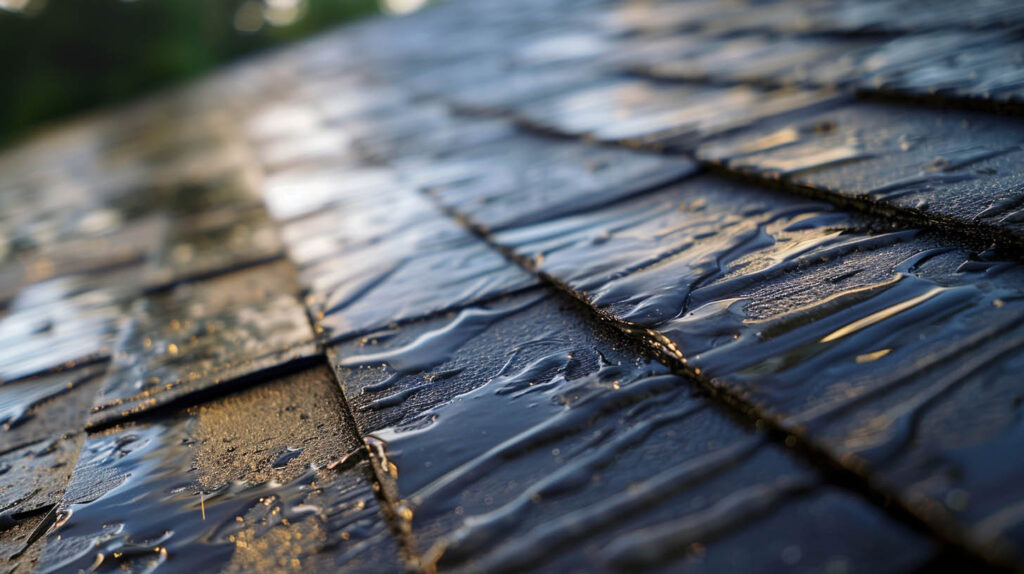
How Shingle Granules in Gutters Signal Deeper Problems
Have you noticed a build-up of dark, sand-like particles in your gutters after a storm? Those are granules from your asphalt shingles, and seeing a large amount of them is a serious red flag. These granules protect your roof from UV rays and add to its fire resistance. When they wash away, your shingles become brittle and ineffective.
Significant granule loss is a sign of advanced wear and indicates that your roof is nearing the end of its life. The underlying asphalt is now exposed to the elements, which can accelerate deterioration and lead to cracks and leaks. This visible damage compromises the entire roofing system.
If you find a large collection of granules, it’s time to call for a professional inspection. A professional can determine if the granule loss is a sign of isolated damage or an indication that your roof requires more extensive work to prevent costly repairs and protect the roof deck.
Leaks, Water Stains, and Attic Moisture
While exterior damage is a clear indicator, some of the most serious signs of roof damage appear inside your home. Water stains on your ceiling, signs of attic moisture, or active water leaks are definitive proof that your roof’s defenses have been breached. Water intrusion is a serious problem that requires immediate action.
Ignoring these interior signs can lead to structural rot, mold growth, and compromised insulation. Recognizing these warnings early can save you from extensive and expensive water damage repairs. We’ll explore where to look for these signs and why a quick response is critical.
Recognizing Interior Signs: Ceilings and Walls
Interior signs of roof damage often emerge subtly but should never be ignored. Look for water spots, which may indicate leaks or significant water infiltration. Peeling paint or warped drywall can signal that moisture has penetrated your roofing system, possibly leading to mold growth or further structural issues. In some cases, sagging ceilings may also point to deeper problems, requiring the immediate attention of a professional roofing contractor. Addressing these signs quickly ensures the longevity of your home and avoids costly repairs down the line.
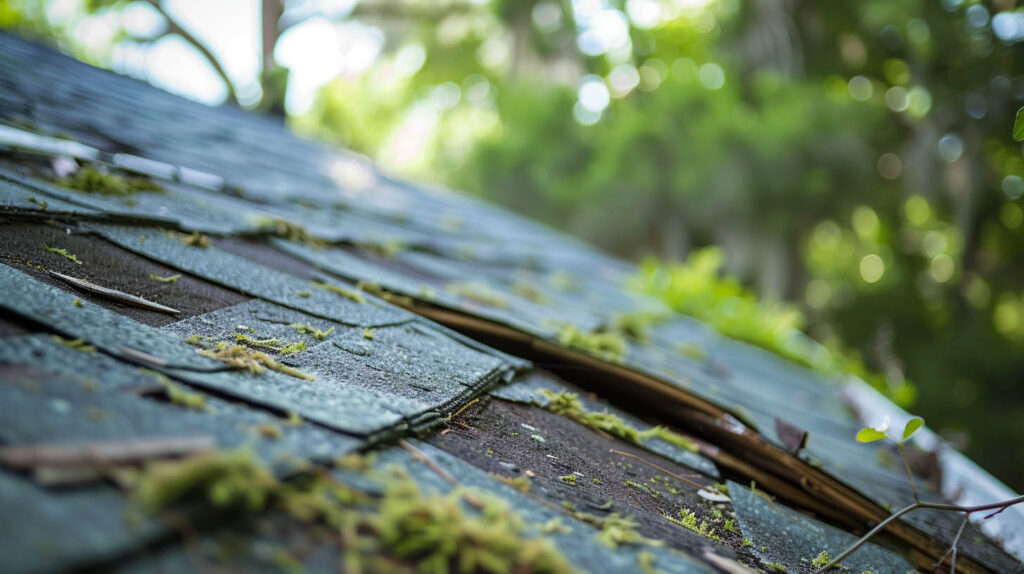
Why Immediate Action Is Critical to Prevent Mold and Rot
Water intrusion can lead to extensive mold growth and rot within your home. This not only compromises your roofing system but also poses health risks for your family. Delaying action increases the likelihood of structural problems, leading to more costly repairs or even a full roof replacement. Regular inspections can help catch signs of damage early, but once leaks are present, immediate attention is necessary to ensure a safe, dry environment and maintain the life of your roof.
Call Us 904-712-3494Get Quotes
In summary, recognizing the signs that your roof needs immediate repair after a storm is crucial for maintaining the safety and integrity of your home. Whether it’s visible shingle damage or leaks in your attic, these issues can escalate quickly if not addressed promptly. As a locally operated company in Jacksonville, FL, Avenue Roofing understands the unique challenges posed by our climate. Our team, backed by certifications like Select Shingle Master and an A+ BBB rating, is here to provide you with expert care and precision. Don’t wait until it’s too late—get quotes from us today and ensure your roof is ready to withstand whatever nature throws your way!
Frequently Asked Questions
What are the signs that a roof needs to be replaced?
A roof generally needs replacement if it’s over 20 years old, shows widespread shingle damage, or has a sagging roofline. Other warning signs include persistent leaks, extensive granule loss, and significant structural issues. When a damaged roof reaches the end of its lifespan, replacement is more cost-effective than repeated repairs.
Will insurance pay for a new roof after a storm?
Whether an insurance company will cover a new roof after a storm depends on your policy and the extent of the roof storm damage. It’s crucial to document all damage and file your insurance claim promptly. Working with a professional roofing company like Avenue Roofing can help you navigate the process and ensure all damage is properly assessed.
Read our blog: Asphalt vs. Tile Roofs in Jacksonville: Which Is Better for Your Home?
